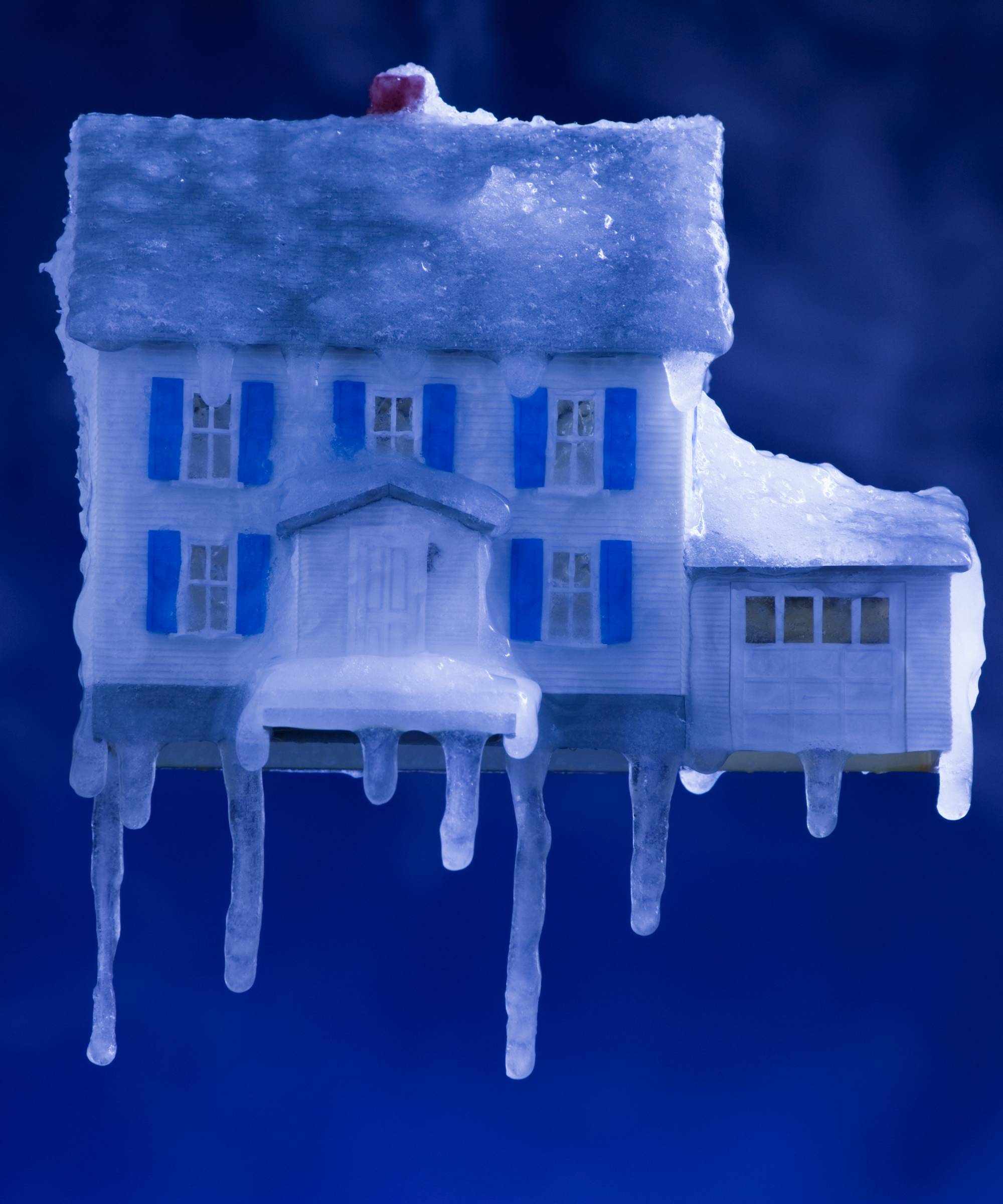This is how cold a room can be before you need to switch off your dehumidifier
With winter a prime time for dehumidifier use, we asked experts, do dehumidifiers work in cold rooms or do we need to turn up the thermostat for the best results?

Do dehumidifiers work in cold rooms is a question you may be asking yourself if yours isn't performing quite as well as you'd hoped. However, the answer is a little more complicated than a simple yes or no.
While there is some element of truth in the fact that temperature can affect performance, it comes down to a number of different factors including the type of dehumidifier, its size and where you are using it.
We asked experts do dehumidifiers work in cold rooms so you can make sure you have the best dehumidifier for the job, and know how to make it work well.
Do dehumidifiers work in cold rooms? Why temperature matters
Dehumidifiers come in two main types – desiccant vs compressor. It's important to understand how do dehumidifiers work before purchasing one, as temperature plays an important part in which one works best in colder spaces.
While both remove moisture from the air, a compressor dehumidifier works using coils and a refrigerant system – much like your refrigerator, but a desiccant dehumidifier is different.
"Temperature has a significant impact, particularly for compressor dehumidifiers," confirms Chris Micheal, co-founder managing director of Meaco. "The colder the room, the less efficient it becomes.
"Compressor dehumidifiers rely on the cooling coils inside to condense water from the air, but in colder rooms, the temperature difference between the coils and the air is reduced, making condensation less effective," he explains. "And, if the room is too cold, the coils can also freeze – although compressor dehumidifiers do have a defrost mode to try to prevent this from happening."
Bring your dream home to life with expert advice, how to guides and design inspiration. Sign up for our newsletter and get two free tickets to a Homebuilding & Renovating Show near you.
Adele Brennan, home electricals buyer at VonHaus explains why dessicant dehumidifiers are less impacted by a sudden drop in temperature.
"In terms of desiccant dehumidifiers, these models can work effectively in cooler temperatures, as well as warmer temperatures, as they don’t require a refrigerant system to work," Aneesa says. "Instead, they use an absorbent material to pull moisture from the air."
"This chemical absorption process works consistently regardless of temperature," adds Chris Michael.

Chris Michael, founder and managing director of Meaco, has over 30 years of experience in the air treatment sector. Meaco's extensive product line is available in more than 20 countries, including regions across Europe, North America, and South Africa.

Adele Brennan is the home electrical buyer at Domu Brands Ltd. She has 11 years’ experience within the retail industry and currently specialises in home electrical products. Within her current role, she is responsible for sourcing and choosing high-quality products for retail.
Shop these dehumidifier deals
When is it too cold for a dehumidifier?
If the temperature has massively dropped outside, or you've got a problem with your heating that means your home is like an ice-box, it could be time to switch the dehumidifier off until it gets warmer. Both types of dehumidifier have a point at which they will no longer be able to work properly.
"Compressor dehumidifiers typically struggle below 15°C," says Chis Michael, "and can stop working entirely around 5°C due to freezing."
"Below 1°C is considered too cold for a desiccant dehumidifier," advises Anessa Khan, although Chris notes how they have been known to keep on working even below freezing.
What room temperature is best for a dehumidifier?
In terms of what is defined as cold, the general advice is that a constant room temperature below 10°C is the point at which you need to switch to a desiccant dehumidifier.
Wondering which dehumidifiers is best for cold rooms? "Desiccant dehumidifiers, perform well regardless of the temperature," says Chris Michael, "making them a great choice for colder environments such as garages, unheated conservatories, basements or even boats."
For inside the home, where the temperature is kept higher, in particular during the winter when it's important to stick to the advised minimum house temperature to avoid issues with mould, damp and condensation, a compressor dehumidifier however will be the better option.
"Any size compressor dehumidifier is useful for when room temperatures are above 15°C," confirms Anessa Khan, although for the best energy efficiency, "compressor dehumidifiers work best in warmer conditions, ideally above 20°C, a typical temperature in a heated UK home," says Chris Michael.
But, if you've already invested in a desiccant dehumidifier, and your room temperature sits between the 15-20°C range don't worry, as unless you keep your home way above this temperature, it will still do the job.
"Desiccant dehumidifiers are very durable," confirms Anessa, "and are effective in most conditions, and will work in temperatures between 1-20°C."
There can also be an added benefit of using a desiccant dehumidifier in rooms where the temperature sits between 10-20°C. As they push hot air back out, they can also help to heat the room. And while they are a little more expensive than compressor dehumidifiers to run, this cost could reduce the need to turn the heating on so frequently.

Keen to understand more about the different types of dehumidifier? The team at Homebuilding have spent many hours testing them to help you make the right purchasing decisions. Find out what Homebuilding's editor, Amy Willis discovered when she tested the EcoAir DD2 Simple Dessicant dehumidifier and why I rated the MeacoDry ABC 12L model the best dehumidifier for bedrooms.

Sarah is Homebuilding & Renovating’s Assistant Editor and joined the team in 2024. An established homes and interiors writer, Sarah has renovated and extended a number of properties, including a listing building and renovation project that featured on Grand Designs. Although she said she would never buy a listed property again, she has recently purchased a Grade II listed apartment. As it had already been professionally renovated, she has instead set her sights on tackling some changes to improve the building’s energy efficiency, as well as adding some personal touches to the interior.



